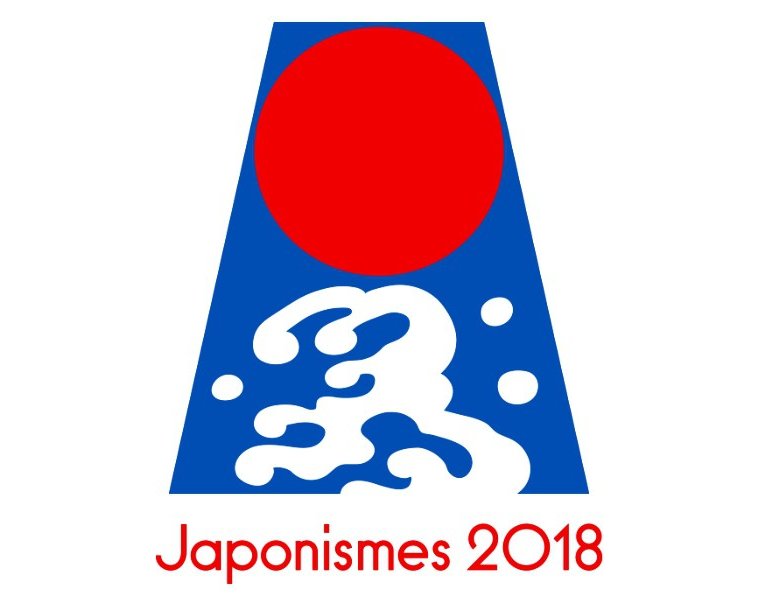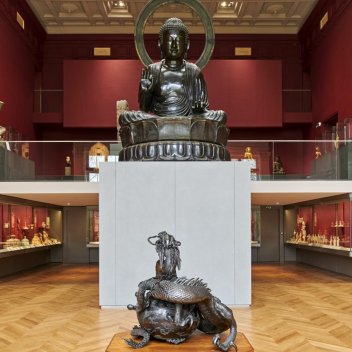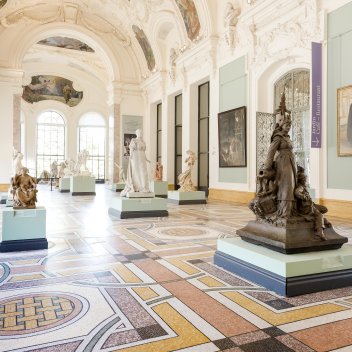
Two exhibitions in the Japonismes 2018 festival
To celebrate the 160th anniversary of diplomatic relations between Japan and France, the Petit Palais and the Musée Cernuschi are presenting two exhibitions dedicated to the land of the rising sun: Jakuchū, Colourful Realm of Living Beings at the Petit Palais and Treasures of Kyoto, three centuries of Rinpa Art, at the Cernuschi.
Museums :
Dans 2 musées
7 avenue Vélasquez
75008 Paris
France

Avenue Winston Churchill
75008 Paris
France
A season based around Japanese art and culture
Exhibitions, theatre, concerts, films, cuisine – the events organised under the auspices of Japonismes 2018 are being hosted in the major cultural venues of Paris and the French provinces!
The cultural season, spearheaded by the French and Japanese governments, is showcasing the many facets of Japanese culture to celebrate 160 years of diplomatic relations between Japan and France.
The title, Japonismes 2018 was chosen to reflect the interest of French artists in Japanese culture, particularly their enthusiasm for 19th century Japanese prints, which were such a great influence on French painters.
Paris Musées, a leading partner in the Japonismes 2018 season, is organising two exhibitions devoted to Japanese art: one at the Petit Palais and the other at the Musée Cernuschi.
Jakuchū, le Royaume coloré des êtres vivants / Jakuchū, The Colourful Realm of Living Beings at the Petit Palais
15 September – 14 October 2018
Le Petit Palais is particularly honoured to present, for the first time in Europe – thanks to exceptional loans from the Japanese Museum of Imperial Collections –, the thirty hanging scrolls entitled Dōshokusai-e (The Colourful Realm of Living Beings) which were painted by Itō Jakuchū between 1757 and 1766.
Jakuchū was an acclaimed artist, active in the mid-Edo period (18th century). He was highly regarded in Japan for the delicacy of his brushwork and the brilliance of his colours.
The series The Colourful Realm of Living Beings is considered to be the masterpiece of his lifetime. It has only been exhibited once outside Japan (at the National Gallery of Art in Washington in 2012).
The works in this series depict flora and fauna, painted with a realistic precision stemming from his close observation of the subjects. The thirty scrolls feature such subjects as cockerels, fish, peacocks, phoenixes, ducks, and cherry trees in blossom. They demonstrate astonishingly delicate brush strokes and unbelievably brilliant colours, as well as outstanding technique and artistic skill.
Because the works are extremely fragile, they can only be exhibited, on an exceptional basis, for one month in the context of the Japonismes 2018 season.
Trésors de Kyoto, trois siècles de création Rinpa / Treasures of Kyoto, three centuries of Rinpa Art
26 October 2018 – 27 January 2019
The Musée Cernuschi presents the exhibition Trésors de Kyoto, trois siècles de création Rinpa (Treasures of Kyoto, Three Centuries of Rinpa Art). Priceless masterpieces will be on view for the first time outside Japan.
An extraordinary work of art on display for 4 weeks
A unique opportunity, lasting only four weeks, to see the Japanese national treasure The Gods of Wind and Thunder by Tawaraya Sotatsu. The work is kept in the Kennin-ji temple in Kyoto and can only be viewed on rare occasions. The event is of particular importance in the context of this 160th anniversary of diplomatic relations between Japan and France.
The different generations of the Rinpa school
More than sixty works are being displayed in a four-part chronological sequence based on the different generations of artists of the Rinpa school.
From the very beginning of the exhibition, the scenography celebrates the dazzling splendour of gold leaf, preparing the visitor for the magnificence of the works, before immersing them in an atmosphere of contemplative reflection.
Because of their fragile nature, the works presented will be changed and rotated four times over the course of the exhibition.